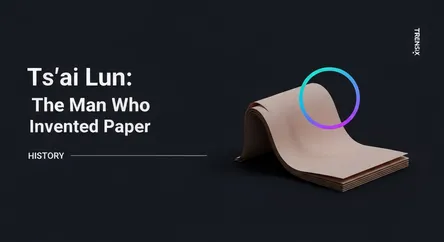History
Ts'ai Lun: The Man Who Invented Paper

Discover Ts'ai Lun, the Han Dynasty court official credited with inventing paper in 105 AD, a creation that forever changed the world.
What is it?
Ts'ai Lun (also romanized as Cai Lun) was a Chinese court official of the Eastern Han Dynasty. While earlier forms of paper existed, he is traditionally credited with inventing paper in its modern form around 105 AD. He developed a new process for papermaking by macerating materials like mulberry bark, hemp waste, old rags, and fishnets into a pulp. This pulp was then pressed into thin sheets and dried, creating a lightweight, affordable, and effective writing surface that was far superior to previous materials like bamboo strips or expensive silk.
Why is it trending?
Ts'ai Lun's innovation is a cornerstone of world history and a pivotal moment in the development of civilization. The creation of a mass-producible and inexpensive medium for recording information was revolutionary. His process standardized papermaking, allowing knowledge to be recorded and disseminated on an unprecedented scale. The technique was so effective that its fundamental principles are still in use today. This invention is considered one of China's great contributions to the world, paving the way for the development of printing and the spread of literacy and education globally.
How does it affect people?
The invention of paper had a profound and lasting impact on humanity. It made written communication accessible to a much broader population, not just the wealthy elite. This democratization of knowledge fueled advancements in literature, science, government, and art. For centuries, paper has been the primary medium for books, official documents, and personal correspondence, fundamentally shaping how societies store, share, and build upon their collective knowledge. Every book we read and note we write is a testament to the enduring legacy of Ts'ai Lun's work.